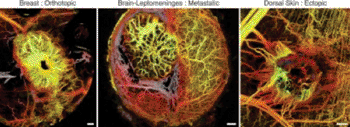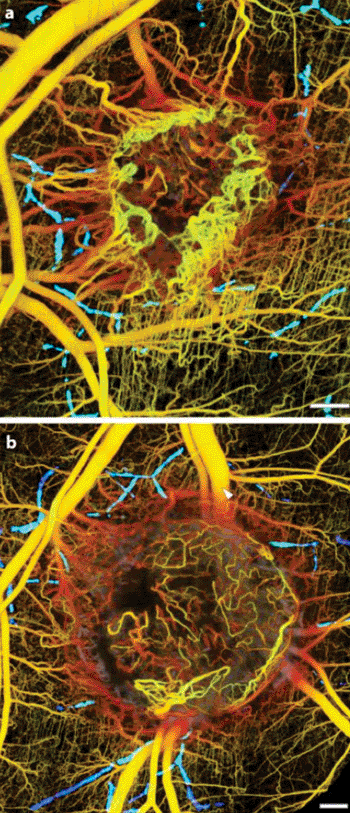Live Images of Growing Tumors Reveals Cancer’s Hidden Mechanisms
By LabMedica International staff writers
Posted on 25 Sep 2013
A group of researchers has developed a novel new optical imaging tool that enables them to look deep within tumors and reveal their inner processes, helping them to understand the slight, frequently concealed, changes to DNA, cells, proteins, and tissue that alter the body’s healthy biochemistry and cause disease. Posted on 25 Sep 2013
In research that will be presented at Frontiers in Optics (FiO), the Optical Society’s (OSA) annual meeting, to be held October 6–10, 2013, in Orlando (FL, USA), Dr. Dai Fukumura and his colleagues will present new optical imaging technology designed to track the movement of molecules, cells, and fluids within tumors; study abnormalities in the blood vessel network inside them; and observe how the tumors were affected by treatments.
These techniques, created by Dr. Fukumura and his long-term collaborators at Massachusetts General Hospital (MGH; Boston, MA, USA) and Harvard Medical School (Boston, MA, USA), combine two different high-tech optical imaging methods that were personalized for the research purposed. One approach is called multiphoton laser-scanning microscopy (MPLSM), which is a sophisticated fluorescence imaging technology that is now commercially available at the high end of the microscope market. The other is called optical frequency domain imaging (OFDI), which images tissues by their light scattering characteristics. OFDI is gaining acceptance in the optical imaging field but has not yet to become commercially available, according to Dr. Fukumura. “MPLSM overcomes many of the limitations from which conventional microscopy and confocal microscopy suffer, and OFDI provides robust large volume imaging data,” Dr. Fukumura said.
At FiO 2013, Dr. Fukumura will describe how his unique technique can image tumors completely, and show detailed pictures of live tumors—images that he and colleagues call “astonishing.” He noted that while the new integrated tool would be too costly to be used for regular diagnostic purposes, it has the potential to help scientists better figure out the obscure mechanisms of human cancer and aid in drug discovery for cancer therapy. “These optical imaging approaches can provide unprecedented insights in the biology and mechanisms of cancer,” he concluded.
Related Links:
Massachusetts General Hospital
Harvard Medical School
















